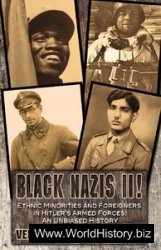The Caribbean is, of course, geographically part of the Atlantic, and its economy, social
structure, and political situation tied it very clearly into what historians term the
“Atlantic world.” By the seventeenth and eighteenth centuries, that world also connected
to the Indian Ocean, and to the lives of people far from any sea. Millions of
pieces of Chinese porcelain made in the inland city of Jingdezhen were transported to
Canton, carried on ships to Amsterdam and London, and then exported to Jamaica,
Boston, Berlin, and Moscow. Calico cloth made by village residents in the Gujerati area
of northwest India went to Europe, but also to the Senegambia in western Africa, where
it was traded to African merchants for slaves and for the gum of the acacia tree. Acacia
gum was used in Britain and France for papermaking and for producing calicoes that
Europeans hoped might eventually compete with those of India. Calico was one of the
many items promised “in perpetuity” to Native American tribes in treaties with British
and later American authorities. Commerce in the Atlantic is often described as a “triangle
trade” linking Europe, Africa, and the Americas, but no geometrical fi gure can
accurately capture the many lines of interaction.
The colonies established in North America by powers other than Spain and Portugal
were a key part of this Atlantic world. The earliest colonies were tiny and underfunded,
often dependent on indigenous peoples for their survival. Half failed, whether through
conquest by another power, disease, abandonment, economic or environmental collapse,
or indigenous opposition.
English-sponsored voyages to the Americas began with those of John Cabot in
1495, but nearly a century later Hakluyt and others were still trying to encourage a
fi rst successful settlement. In 1585, the English writer, explorer, and New World promoter
Sir Walter Raleigh (1554–1618) founded a small colony at Roanoke Island off
what is now North Carolina, but the colonists vanished within several years. About
twenty years later another group settled at Jamestown in Virginia, organized by the
joint-stock Virginia Company, though it was several decades before the colony’s stability
was assured. Colonists experimented with different cash crops as well as grain
and root crops for their own use, and gradually established a system of indentured
servitude to supply the needed labor. Ship captains recruited young people, mostly
boys and young men, but also some young women, as indentured servants, then sold
the contracts to Virginia colonists. The fi rst Africans came to English North America
in 1619, in a ship named the Jesus ; though in the early decades some Africans were
indentured servants, most of them were permanent slaves. Native Americans were
also enslaved in many southern colonies, but their numbers were soon dwarfed by
those of Africans.
SOURCE 37 The transportation of children
As in the Caribbean, not every indentured servant
came to North America voluntarily. The following
is a letter from Sir Edwin Sandys of the Virginia
Company requesting a member of the king’s
Privy Council to give him the authority to coerce
children to go to Virginia in 1620. These were
children the government of the city of London
had determined were “superfl uous”; many were
probably orphans, but we know from other sources
that poor children were also simply rounded up
on the streets, and transported despite the objections
of their parents. Sandys makes no mention
of labor needs in Virginia in his letter, but frames
it in terms of relieving a burden on the city and
improving the character of young people he views
as dangerous and shiftless.
Right Honorable [Sir Robert Naughton of the
King’s Privy Council]:
Being unable to give my personal attendance
upon the Lords [the Privy Council], I have
presumed to address my suit in these few
lines unto your Honor. The City of London
have by act of their Common Council, appointed
one hundred children out of their
superfl uous multitude to be transported
to Virginia; there to be bound apprentices
for certain years, and afterward with very
benefi cial conditions for the children. And
have granted moreover a levy of fi ve hundred
pounds among themselves for the appareling
of those children, and toward their charges of
transportation. Now it falleth out that among
those children, sundry being ill disposed, and
fi tter for any remote place than for this City,
declare their unwillingness to go to Virginia,
of whom the City is especially desirous to be
disburdened, and in Virginia under severe
masters they may be brought to goodness.
But this City wanting authority to deliver,
and the Virginia Company to transport, these
persons against their wills, the burden is laid
upon me, by humble suit unto the Lords to
procure higher authority for the warranting
thereof. May it please your Honor therefore,
to vouchsafe unto us of the Company here,
and to the whole plantation in Virginia, that
noble favor, as to be a means unto their Lordships
out of their accustomed goodness, and
by their higher authority, to discharge both
the City and our Company of this diffi culty,
as their Lordships and your Honors in your
wisdom shall fi nd most expedient. For whose
health and prosperity our Company will
always pray…
(From Susan M. Kingsbury , ed., The Records of the
Virginia Company of London: The Court Book, from the
Manuscript in the Library of Congress, vol. III [ Washington:
Government Printing offi ce , 1933], p. 259.)
These earliest ventures were organized by various chartered companies and motivated
primarily by the hope of wealth, but in 1620 a group of religious separatists
called the Pilgrims established a colony at Plymouth far to the north of Jamestown.
Over the next several decades, other colonies were established by groups unhappy with
the religious situation in England, primarily Puritans – who set up Massachusetts Bay,
Rhode Island, Connecticut, and New Haven – but also Catholics, who established the
colony of Maryland. Each of these colonies was chartered by the crown, which allowed
the colony the right to make local laws, as long as these did not go against the laws of
England. Many of them established some sort of assembly; in most colonies propertied
males could vote for members in the assembly, though in Massachusetts only
those men who were approved members of the church had the right to vote. In order
to be full church members, men had to make a confession to the whole congregation
describing their personal conversion experience. Women became church members independently
through their own conversion experiences, though this did not give them
political rights.
Early French colonies in North America were just as tiny and tenuous as British
colonies. France attempted to found colonies in Florida and Canada in the middle
of the sixteenth century, but these were either taken over by the Spanish or immediately
failed. The fi rst long-lasting French settlements were at Acadia and Quebec in the
fi rst decade of the seventeenth century, owned by a series of noblemen who worked
sporadically with merchant companies to try to encourage colonization, though they
were not very successful. Both Quebec and Acadia were occupied by the English for
short periods during the seventeenth century, and French explorers, fur-traders, and
missionaries moved westward, founding forts, trading posts, and a few small missions
along the coasts of the Great Lakes and the Mississippi River. These early French colonies
were based on a single product – fur, especially beaver pelts destined to be made
into hat felt, for such hats were the height of fashion in Europe.
As in the Caribbean, other countries joined Spain, England, and France in founding
colonies in North America. In 1609, the English explorer Henry Hudson led an expedition
in northeastern North America sponsored by the VOC, and claimed various places
where he landed for the company. Dutch fur-traders set up a few forts near present-day
Albany, New York, and in 1623 the new Dutch West Indian Company persuaded the
States General to declare the whole area a Dutch province, called New Netherland. In
1626 the WIC founded New Amsterdam on the southern tip of the island of Manhattan
at the mouth of the Hudson River, primarily as a base to defend its fur-trading
operations; this became the largest Dutch colonial settlement in North America, and
attracted settlers from other parts of Europe. In 1638 Sweden established the fi rst of
several colonies along the Delaware River, but in 1655 most of these were conquered by
the Dutch, who saw them as a threat. Most of the Swedish colonists stayed, however,
adding to the mixture of settlers in the Dutch colonies.
In the 1660s, a second wave of colonies were founded, especially by England. English
forces conquered New Netherland, including the settlement at New Amsterdam,
renaming both New York, in honor of the younger brother of the newly restored King
Charles II, James, duke of York. Colonies were founded in South Carolina and Georgia
in 1670, to form a buffer between Virginia and the Spanish colonies in Florida, and to
attempt the introduction of profi table subtropical crops, including indigo, tobacco,
and rice. Georgia also served as a penal colony for the transportation of debtors, vagrants,
and criminals. In 1682, William Penn (1644–1718), a prominent member of the
Society of Friends – the Quakers – received a charter for what became Pennsylvania,
which included the former New Sweden. Most of the new colonies, including Penn’s,
were proprietary, meaning they were owned outright by a single person or group.
Virginia had a governor appointed by the king, along with an elected assembly, and
the New England colonies were largely controlled by their elected assemblies. Economically
the mid-Atlantic and New England colonies depended on agriculture done
by families, sometimes with the assistance of an indentured servant or two. Virginia
was primarily settled by small farmers in the interior, though coastal merchants and
larger landholders dominated the economy. Discontent among poorer farmers and
indentured servants led to Bacon’s Rebellion in 1676; the leaders of Virginia society saw
importing more African slaves as a way of reducing the number of future rebels and
lessening social tensions among white colonists by establishing a permanent, racially
marked labor force.
As we have seen, attempts by French chartered companies to encourage permanent
settlements in North America were not very successful, and in 1663 Louis XIV brought
all of New France under direct royal control. He appointed a governor-general to handle
military matters, and an intendant similar to those he was appointing in France to
handle administrative affairs. Each regional colony had its own governor and intendants
, also put in position by the king. Some historians have, in fact, seen New France
as a sort of laboratory for absolutism, where traditional noble privileges meant little,
no guilds restricted trade or production, and commoners could advance more quickly
through service to the monarch and their own skills.
Louis XIV, or, more accurately, his fi nance minister Jean-Baptiste Colbert, recognized
that increasing the population of New France was important if French holdings
were to compete with the steadily growing English colonies. Most immigrants in the
seventeenth century were unemployed young men from urban environments, who
stayed briefl y and then either died or went back to France. The English colonies also
attracted young single men, but also young single women in the colony who married
these men, and young families, so that they grew from both immigration and natural
increase. For a brief period in the 1660s the French crown directly recruited young
women, mostly poor women from charity hospitals, and paid for their passage; about
eight hundred of these fi lles du roi (daughters of the king) did immigrate, more than
doubling the number of European women in the colony who were not nuns. Colbert
stated explicitly, however, that “it would not be wise to depopulate the kingdom in
order to populate Canada,” and so recommended instead that “the most useful way
to achieve it would be to try to civilize the Algonquins, the Hurons, and the other
Savages who have embraced Christianity; and to persuade them to come to settle in a
commune with the French, to live with them, and educate their children in our mores
and our customs.” 2 Thus offi cial policy in New France in the seventeenth century was
one of the assimilation of Native Americans through francisation , through which they
would be “made French.”
The policy of francisation included intermarriage between French men and indigenous
women, for the French hoped that such marriages would help the fur trade
and strengthen ties between French and Native American communities and families.
French fur-traders – called voyageurs or coureurs de bois (“runners of the woods”) – did
frequently marry Native American women as they traveled further and further west,
relying on their wives and their wives’ families for many things. In contrast to free
people of color in the French Caribbean, however, very few Native Americans in New
France were interested in adopting French culture or integrating into French society
on French terms, and the policy was abandoned at the end of the seventeenth century.
Intermarriage between French traders and Native American women continued,
especially in central and western fur-trading areas where European women were, in
fact, banned until the 1820s. Offi cials now worried, however, about the man adopting
“savage” customs from his wife rather than expecting that she would become French
through him. Jesuit missionaries set up communities for Christian converts, but lived
slightly separate from them; they translated Christian materials into local languages,
and, as in China, tried to explain Christian beliefs and practices in terms of native customs.
Becoming Christian no longer required becoming French.
British missionaries were far less active among native peoples than were French
or Spanish Jesuits and Franciscans, and intermarriage with native people was never
English policy. There were separate settlements for Indian Christians in New England:
“praying towns” in which converts were expected to follow Christian mores in terms
of marriage and behavior as well as worship and other religious practices. There were
never very many of these, however, and the rapidly expanding European population of
New England made the primary story of native–immigrant relations one of European
appropriation of Native American land for new settlements, war, and the eventual expulsion
of natives from many parts of New England.
In the southern states there was little missionary activity and very few churches even
for immigrants. Slaveowners often chose not to baptize their slaves, for they feared
this might mean they would have to free them. In 1667, the Virginia assembly, called
the House of Burgesses, passed a law stating that baptism did not change one’s condition
of servitude, but many owners still refused to allow their slaves to be baptized.
This was also true in the British Caribbean, whereas Catholic slaveowners in both the
French and Spanish colonies were more likely to baptize their slaves, as the Code Noir
enjoined.
The eighteenth century brought further expansion and shuffl ing in French, British,
and Spanish North American holdings. In 1699, the French founded Louisiana at the
mouth of the Mississippi to prevent either the Spanish or the British from controlling
trade from the interior, especially the furs that were being transported from the
French Illinois colony. By 1750, Louisiana had a population of about four thousand
Europeans, some of them unwilling transports from French prisons and cities, sent
into what became known as “Louisiana slavery.” Others were Germans attracted by
brochures produced by fi nancier John Law, whose investment schemes for spectacular
profi ts involved recruiting thousands of new residents to French colonies in the Americas.
About fi ve thousand of Louisiana’s residents were African slaves, growing tobacco,
indigo, and rice. In the late 1750s, these groups were joined by French colonists from
Acadia (now part of the Canadian province of Nova Scotia) deported by the British
after they conquered the area. Though the number of Acadians who came to Louisiana
was probably only somewhat over a thousand, their story became an essential part of
Louisiana culture, and many residents with no ties to this group also came to think of
themselves as “Cajun.”
The conquest of Acadia was only one part of British expansion into French territory.
By 1750, the valley of the St. Lawrence River was fi lled with French farms that
exported grain to the Caribbean, and the port town of Louisbourg on Ile Royale (now
Cape Breton Island, part of Nova Scotia) was a thriving center for trade in fi sh from
the Grand Banks and products from around the world. The entire population of New
France, however, probably included only about 100,000 Europeans and Africans, while
the British North American colonies had at least one and a half million inhabitants,
and perhaps as many as two million. The northern British colonies had developed extensive
craft industries in ship-building, pottery, and iron goods, and three towns with
populations of more than ten thousand: Philadelphia, New York, and Boston. New
Englanders helped British troops and the British navy take Louisbourg in 1745, a small
American skirmish that was part of the War of the Austrian Succession (1740–8). The
terms of the peace treaty returned Louisbourg to France, but tensions between French
and British settlers continued, spreading into the Ohio River valley. In 1754, the young
George Washington led a small contingent of troops against French forces in western
Pennsylvania in the fi rst battle of what came to be known in the United States as the
French and Indian War (1754–63). British forces widened their attacks on New France,
and North America became one battleground in the war known more widely as the
Seven Years War (1756–63). Louisbourg fell again, as did Quebec, and at the end of the
war France was required to cede Louisiana to Spain and the rest of its North American
holdings, other than two tiny islands, to Britain.
The Seven Years War left Britain in control of most of eastern North America, with
King George III and his ministers deciding that ties between Britain and what had become
its most valuable colonial possession should be strengthened, and that the colonies
should provide a fairer share (to British eyes) of the revenue needed to run an empire.
The government decided to enforce demands for revenue and other acts previously left
unenforced, and set new taxes on sugar, the stamps required for offi cial documents, and
other goods. These measures met increased resistance, and led to colonial challenges to
British authority, fi rst as protests, boycotts, mob violence, organizing, speeches, pamphlets,
and essays, and then military action. Fighting began in 1775, and eventually involved
white settlers, black slaves, and Native American groups on both sides, along with
British troops and Germans hired by the British. France entered the war on the side of
the Americans, fi rst with money and supplies and then with soldiers and ships. Spain was
allied with France, which made every British colony in the Caribbean vulnerable, and
British supply lines were long and stretched thin. Many other European states, including
Russia under Catherine the Great, formed a League of Armed Neutrality, which worked
against British interests, blocking them from being able to substitute Baltic wood and tar
for American, thus hindering ship repair and maintenance.
The colonies began the war with militia that were used to serving for a relatively
short term of service, but by the end at least some of these troops had been turned into
skilled, disciplined soldiers, similar to those fi ghting for European generals. In fact,
some of the American offi cers were European generals, either veterans of the British
army or continental military offi cers attracted to the fi ght. In 1781, a large British army
was forced to surrender by French and American forces supported by French ships,
and fi ghting in North America died down. Fighting continued in the Caribbean, and
British and French troops were still fi ghting halfway around the world in India when
the peace treaty confi rming the independence of the thirteen colonies was signed in
1783. Loyalists streamed to other British colonies, especially several of the provinces in
Canada, and British islands in the Caribbean. Britain could no longer send prisoners
to North America as indentured servants, and a few years later the country established
the fi rst penal colony in Australia.
The Seven Years War, the War of American Independence, and the numerous other
wars discussed in chapter 9 often involved formal naval battles on the Atlantic as well
as land fi ghting in the Americas, especially in frontier and border areas. War disrupted
connections around and across the Atlantic, but also increased those connections
and made them more complex, as political exiles sought new places to live, religious
refugees founded places where they could worship more freely, former indentured servants
settled in lands newly appropriated from indigenous peoples, indigenous peoples
moved deeper inland, and slaves were purchased in ever greater numbers to replace
those killed by warfare as well as the millions who died from the normal working conditions
on plantations.
All of these people carried customs, languages, stories, religious beliefs, food preferences,
music, kinship structures, funerary practices, and many other aspects of their
cultures with them. For some, their cultural traditions were silenced or suppressed,
but in many places they existed side by side with those from elsewhere, were given
new meanings as people coped with their new environment, or were transformed into
entirely new hybrid forms. West Africans, for example, carried their religion, called Vodun,
to the New World, where it blended with the religious traditions of people from
other parts of Africa, and a few elements of popular Christianity, especially the veneration
of saints, to form related, but new, religions including Vodou in Haiti and Lukumi
in Cuba. Traditions offi cially suppressed or ignored, especially those of indigenous or
enslaved peoples, were sometimes incorporated into more approved forms; Caribbean
and Brazilian Christianity, for example, was shaped by African customs and beliefs, just
as Mexican Christianity was shaped by indigenous practices and ideas.
 Contact
Contact









 World History
World History





